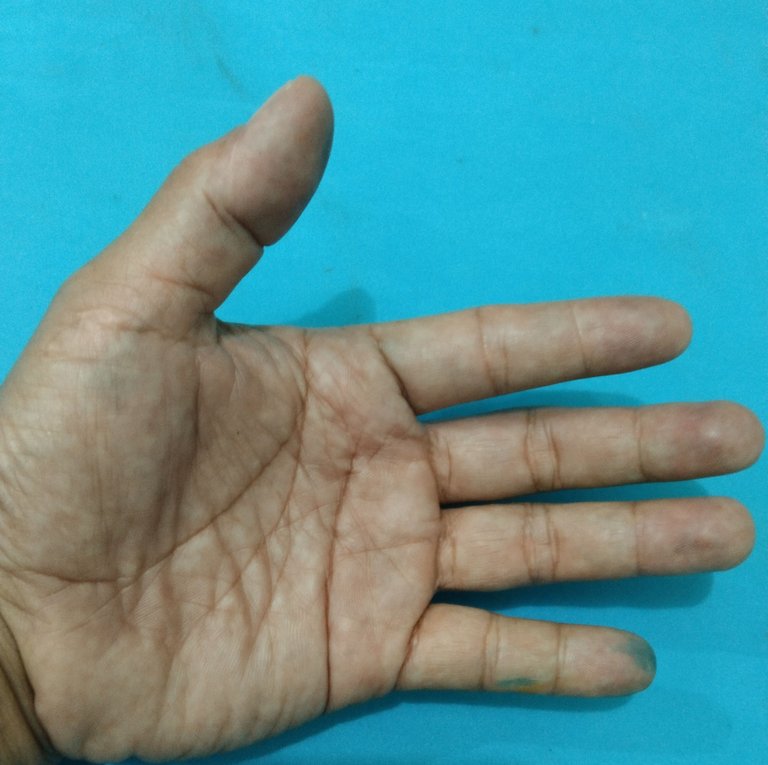Multiplication with finger

Dear all my friends..
For some children learning mathematics is a burden. There are difficulties to be faced with counting. Children's understanding of counting becomes a big problem that will carry over into adulthood.
In fact, with adequate explanations, children will easily understand calculations and make them like math. Therefore, every parent should provide learning how to count that is easy to understand and practical. There are many methods that we can explain to children how to count that is fun and practical, such as multiplication using fingers.
Multiplication with this finger will provide a basic understanding of simple counting before they learn to count more complicated ones such as tens, hundreds, thousands or others.

Multiplication using fingers
This time I will describe how the fingers on our hands can be used to calculate multiplication. The parts of the hand that we can use are the knuckles, and the fingers themselves.
The advantage of this technique is that our limbs are never left behind. It would be different if we had to bring a calculator, or other props. There will always be a risk of us forgetting to put the tools down.
Multiplication with fingers can help children learn to count multiplication from 1 to 10.
Multiply 2 to 5
Multiplication of 2-5 can be done using finger joints. The trick is to start by opening your hands.
Multiply 2
For multiplication by two, use 2 knuckles on each finger (assume or look at two knuckles on each finger).
- Example 2 x 7 = ...
Then we simply count the fingers as much as seven . Each finger is counted as two segments. Then count the knuckles as a whole. So, later will find the result 14.
Multiplication 3
For multiplication by three, use 3 knuckles on each finger (assume or see three knuckles on each finger ), including the thumb (count on the tip).
- Example 3 X 8 = ...
We can count our fingers as many as 5. Remember, each finger has three knuckles, so we count the knuckles as a whole. The result is 24.
Multiplication 4
To multiply by 4, use 4 knuckles on each finger (assume there are 4 knuckles on each finger). Forefinger, middle, ring and little finger, use the tip of the finger as the fourth segment. As for the thumb, add the lower segment of the thumb in the palm of the hand.
- Example 4 X 7 =...
The trick is with 7 fingers, keeping in mind that one finger consists of 4 vertebrae, then calculates all the knuckles according to the assumption earlier. Then the result will be 28.
![IMG_20211203_233336[1].jpg](https://images.hive.blog/768x0/https://files.peakd.com/file/peakd-hive/rokhani/23zkEhViAKVjcyTN68tSiB5pwDvtJk6JsJuTDRRdzvUXLzWxmopEu4UePtgqLrGn6KUTw.jpg)
Multiplication 5
When multiplying by 5, we must remember that one finger is assumed to have 5 vertebrae, or one finger represents five. So if we group two fingers into 10. This means that the suction of two fingers is worth 10, 4 fingers is worth 20. While one finger is worth 5.
Example 5 X 8 =...
Open eight fingers and then group two two so that it becomes four groups. Each group is worth 10 so we can get the result that is 40.Example 5 X 7 =...
Count 7 fingers, then group two by two. The 3 groups contain 2 fingers each (second rule), one finger remaining (first rule). Remember that in a group of 2 fingers the value is 10. Because there are 3 groups, it is 30. While 1 finger is worth 5. So if you add up the result is 35.
![IMG_20211203_232849[1].jpg](https://images.hive.blog/768x0/https://files.peakd.com/file/peakd-hive/rokhani/23zRrMfyAGRArEmvaK9EzFsoV3SEUTBjRUeXFdMVbVYoCnZUS9yBHwJRnUYmCjrTYvud8.jpg)
Multiply 6, 7, 8 and 9 with fingers
For multiplication with 6, 7, 8, and 9 we can use our fingers. Here are the rules:
Assume the little finger is 6, ring finger is 7, middle finger is 8, and index finger is 9.
The way to calculate it is to bend the fingers on both hands according to the multiplication problem command.
The bent finger is added to produce the tens digit, while the finger that is not bent is multiplied. The result is added to the sum of the bent fingers.
- Example 7 X 8 =...
For example, if you want to multiply 7 x 8, then what is bent is:
Little finger, ring finger on right hand
The little finger, ring finger and middle finger on the left hand
Or vice versa – can go back and forth.
The third rule, the bent finger occupies the tens position and is added up (between right and left). While the finger that is still standing occupies the unit position and is multiplied (between right and left).
For the 7 x 8 example problem above, there are 5 bent fingers, because tens means 50. While there are 2 x 3 standing, the result is 6. The final result is 50 + 6 = 56.
Then, what about multiplication by 10?
Almost the same as multiplication by 1. Multiplication by 10 is also very easy.
Remember that 10 is 1 x 10. So basically, multiplying by 10 is the same as multiplying by 1 and adding a 0 after it.
Example:
10 x 1 = 10
10 x 2 = 20
10 x 3 = 30
10 x 10 = 100
Or in other words, multiplying by 10 produces the number itself with an additional 0 behind it.
That's how to calculate simple multiplication using your fingers. We hope the kids will like it this way so they don't have to be afraid of multiplication anymore.
Thus my writing this time may be useful.
Best regard from Indonesia.
@rokhani